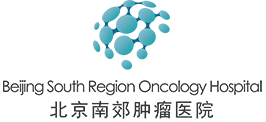A Russian university professor in his late seventies suffers from advanced multiple myeloma. After undergoing multiple treatments and two recurrences of autologous transplantation, he learned about the cutting-edge anti-cancer therapy CAR-T in China, so he came to China to receive CAR-T cell therapy and was discharged smoothly after 13 days of reinfusion. And in the latest follow-up record, the doctor has already seen a complete remission (CR) state in his examination results.
CAR-T therapy, or chimeric antigen receptor T-cell therapy, is a major breakthrough in personalized cellular immunotherapy for cancer. The process involves the collection of the patient’s T-cells, after which in vitro genetic engineering modifications of T-cells are made to enhance the T-cells’ ability to specifically recognize cancers. These modified T-cells (i.e., CAR-T cells) are then infused back to the patient.
KQ-2003 is a BCMA/CD19 dual-targeting CAR T-cell therapy product, utilizing the latest parallel CAR structure to enhance the cell activity and persistence, and the dual CAR structure alleviate the antigen evasion of single target therapy.
A prospective Investigator-Initiated study (NCT04714827) in China aims to evaluate the safety, tolerability, and preliminary efficacy of KQ-2003 CAR-T cells in patients (pts) with relapsed/refractory multiple myeloma (RRMM), particularly in those with extramedullary disease (EMD).
Method
This prospective, multi-center, open label, dose escalation trial enrolls RRMM pts with ≥1 prior lines of therapy including proteasome inhibitor (PI), and immunomodulatory drug (IMiDs), and/or anti-CD38. Pts received lymphodepletion with fludarabine (30 mg/m2/day) and cyclophosphamide (300 mg/m2/day) on days -5 to -3, and then a single intravenous infusion of KQ-2003 CAR-T cells (day 0) in three dose levels (DL) based on a standard 3+3 design: DL1, DL2, or DL3 (1.0, 2.0, or 3.0×106 CAR+ cells/kg). The objective was to evaluate the safety, tolerability, preliminary efficacy and PK/PD characteristics, and to determine the maximum tolerated dose (MTD), dose limiting toxicity (DLT). Hematological response was assessed per IMWG criteria and minimal residual disease (MRD) by new generation flow (NGF). EMD was assessed per Proposal Refinement PET Response Criteria.
Results
As of the Jul.25,2024 clinical cutoff, 23 pts (52.2% male; median age 64 (range 52-77) ) with RRMM received KQ-2003 (3 DL1, 11 DL2 and 9 DL3). The median follow-up duration was 13.7 mo (range 2.1-35.2). Pts had received a median of 5 prior lines of therapy (range 2-11). 91.3% (21/23) were triple-refractory, and 26.1% (6/23) penta-refractory. 65.2%(15/23) had high-risk/ultrahigh-risk cytogenetic profile.
60.9% (14/23) of pts had EMD at baseline, including 7 extramedullary extraosseous (EM-E), 5 extramedullary-bone related (EM-B), 2 pts with both.
In the EMD group, 5 pts (5/14, 35.7%) have no hematological measurable indicators, and the response was evaluated by PET-CT.
Hematological overall response rate (ORR) was 100.0% (18/18), with a sCR/CR rate of 88.9% (16/18), VGPR rate of 11.1% (2/18). The median time to first response was 1.2 mo (N=18, range 0.6–3.1; 22.2% ≤1.0 mo), and the median time to CR/sCR was 2.7 mo (N=16, range 0.6–9.1; 50.0% ≤3.0 mo). Of 19 MRD-evaluable pts, 100% were MRD-negative (10-5), and the 6-mo and 12-mo MRD-neg rate were 80.0%(8/10) and 100.0%(3/3), respectively.
The PET ORR of EMD pts was 85.7%(12/14), including 64.3%(9/14) complete metabolic response (CMR), 21.4% (3/14) partial metabolic response (PMR) and 14.3% (2/14) stable metabolic disease (SMD). 64.3% (9/14) and 50.0% (7/14) of EMD pts had > 50% and > 75% reduction in the size of soft tissue plasmacytomas, respectively. In the 5 EMD pts without hematological measurable indicators, the PET ORR was 80% (4/5) (2 CMR, 2 PMR and 1 SMD).
The median duration of response (DOR) was not reached (NR). The 6-mo progression-free survival (PFS) and overall survival (OS) rates were 86.5% (73.4–100) and 86.2% (72.8–100), 12-mo PFS and OS rates were 75.3% (58.4–97.0) and 86.2% (72.8–100) respectively. The median PFS and OS were NR.
Totally 4 deaths occurred, including 2 on study and assessed as therapy-related (both severe pneumonia), and 2 deaths for PD.
CRS and ICANS were respectively seen in 21/23 (91.3%, grade 3/4 4.3%), and 5/23 (21.7%, grade 3/4 8.7%). The median time to CRS onset was 5d (range 1–9) with a median duration of 4d (range 1–15). The median time to ICANS onset was 10 d (range 8–23) with a median duration of 3d (range 1–9). No DLTs were observed.
KQ-2003 CAR+ T cells copy number (VCN) showed the median Tmax was 14.0, 11.5, and 9.0 d in DL1, DL2 and DL3, respectively. The median Cmax was 140.6, 168.2, and 83.9 copies/ug DNA with long duration of persistence. Among pts with 6 and 12 mo’ follow-up, 66.7% (10/15) and 62.5% (5/8) had detectable CAR+ T cells in peripheral blood.
Conclusions
BCMA/CD19 dual-targeting CAR-T KQ-2003 showed early, deep and durable response in RRMM with acceptable safety. More importantly, it exerted promising efficacy in EMD pts, including the clinical intractable EM-E, which merits further investigation.
At present, there are many other CAR-T clinical trials in China, and they are looking for patients. For consultation on new drugs and technologies, you can contact Beijing South Region Oncology Hospital International Department.
Phone Number:4008803716
Email:myimmnet@163.com
References
1.http://en.novatim-zj.com/show-28-32-1.html
2.https://ash.confex.com/ash/2024/webprogram/Paper201160.html
3.http://myimm.net/mianyizhiliao/1939.html
Post time: Nov-26-2024

